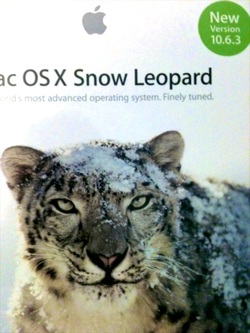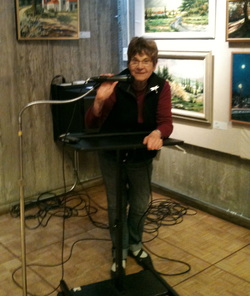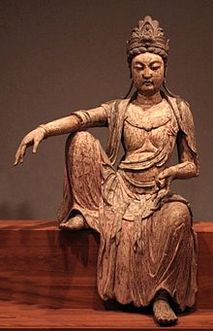 Happy Birthday to me / Alison R. In addition to “Happy Birthdays” on Facebook, which reassured me of my continuing relevance in many people’s lives, my birthday Friday was all about waiting to sign for the UPS delivery of Mac OSX Snow Leopard. The disc would let me upgrade all the way to Mountain Lion and download Face Time and “be two places at once.” Like with my granddaughter and anyone else who so desired. If the disc is delivered early, I tell Kate over celebration coffee at 7 a.m. in Glen Park, I will have the day to find a dog, or go to the movies, or see the Modernism exhibit at the De Young, or walk the trail at Lands End. I can do exhaustive research on a Kindle Fire or Google Nexus7 or an iPad. So many options – if Snow Leopard arrives early. Such a word is “if.” Early delivery did not materialize. By noon my options had narrowed. Facebook messages continued to apprise me of the day’s significance, but waiting for Snow Leopard had become the theme of the day, and the refrains of Happy Birthday, while uplifting, did not undo the waiting. By employing some of what I have learned from sitting meditation, waiting became an engaging way to spend the day. As time passed, I paid attention to my reactions. This way, waiting for the buzzer at the front door did not become mind-numbing or tiresome. Even if I ultimately experienced a descent into abject negativity, I could say yes to the experience, no matter how unpleasant and if it became unbearable and I didn’t want to be with it anymore, I could say “yes” to the “no.” Scrambling among my wisdom sources for instruction, I came upon these words of encouragement from Zen teacher, Dogen Zenji: “Enlightenment is intimacy with all things.” And enlightenment is no small accomplishment. Opening myself to this gift of awareness, I waited for my Snow Leopard, knowing that “all things” means the unpleasant as well as the pleasant. I was willing to experience my feelings of disappointment and frustration, though I would rather have had a different experience. I didn’t like my impatience, my feeling of time wasted, of an empty birthday. When people enthusiastically query me as to how I spent my birthday, did I want to say I spent it waiting for Snow Leopard? That the day was wasted? But saying yes to all feelings is the best way to be kind toward my negative self, to explore what is under the need to be somewhere else, doing something else. When I am willing to be present with “what is,” a different quality of attention arises. In the meantime, all three sons called. One from the Philippines, one from the East Coast and as we spoke he refilled my Starbucks card generously. My son near San Luis Obispo tried to put his daughter on to tell Grandma Alzie “Happy Birthday,” but she balked. My grandson from the Philippines called. My niece, my sister, they called too. But the UPS deliveryman did not. Waiting for Snow Leopard, I became interested, aware that whatever came up in my experience, to paraphrase Tara Brach, whether I liked it or not, was my path. “The challenge is to be completely present with whatever comes up and see what you discover.” This thinking gave me the option of finding my waiting to be engaging, engrossing, gripping, interesting, and intriguing – antonyms of tedious. What’s not to like? At 5:30 p.m., the UPS man buzzed me from the street to say he had arrived and would come up. As he handed me the box, he conjectured it contained an iPhone5. I said I wish, but it’s Snow Leopard, and I lunged at him playfully emitting a light-hearted growl. What had I gained by being present to the roller coaster of emotion as I waited for the delivery man? By practicing mindfulness, I had paid attention to my experience without judging it. The goal is to be for and against nothing. Mindfulness doesn’t take sides or wish for things to be different from the way they are. The wait for Snow Leopard thus became an experience I could use to further my equanimity, the best birthday gift I could give myself and all beings.
 muni bus/copelaes Renunciation
Right here, right now, no big deal
It is what it is.
I composed this Haiku last Wednesday morning. Three lines of 17 syllables divided five, seven, five. And literary merit notwithstanding, I like it very much. It suggests a different way to be in the world, letting go of needing things to be other than they are and not going to war with reality. This Haiku ponders the possibility of setting aside the desire for certain outcomes and experiencing what is real.
Renunciation didn’t just spring full-blown from my forehead. It spoke to me from the Ten Perfections I learned about Tuesday night at the East Bay Meditation Center in a dharma talk by Gina Sharpe. She described renunciation as parting with habits that don’t lead to happiness or contentment.
I contemplated the thought, imagining how I could actually live this wisdom. If there was any truth in it, I could apply it anywhere, at any time. So the same afternoon on the day of its creation as I waited at the bus stop on Fillmore and Sutter, I decided to put the Haiku to the test.
What kind of renunciation would be called for? In no time I saw that I would have to let go of expecting the actual arrival of the two buses to be reflected by the flashing schedule at the bus stop. At about six minutes before the first 22 was scheduled to arrive, it became eight minutes, whereas the second bus, which had been 13 minutes behind the first bus had closed the time gap to three minutes.
No doubt in the real world of the 22 line, the first bus encountered multiple wheelchairs ascending and descending whereas the second bus was zipping along. I felt increased tension as the time on my wrist and the promised time of a bus stretched further apart. I had been pinning my hopes for arriving at Chestnut and Fillmore for an appointment on the flashing information in the bus stop. And now I was imagining the walk to the Apple store lugging my computer case, which though not large would become heavier over time.
As for the Haiku, the lines repeated as if in counter-rhythm to my irritation. This is happening right here, right now and it is no big deal. It is what it is. It is neither a tsunami nor 106 degrees in the shade of the bus stop overhang. And the wisdom of my haiku? Let go of expectation, of irritation. Let go of reaction, think of response. The options are: wait, walk, hail a taxi, depend on the kindness of strangers. I waited.
Renunciation, as it applied to the bus stop, meant let go of fuming, dissatisfaction, blaming drivers, public transportation, or myself for relying on it rather than driving to the Marina and paying to park.
Sister Siripannà in a week-end program in England held in 1996, Renunciation: The Highest Happiness, said if we see our life as an opportunity to understand the way things are, that is renunciation and this letting go is very freeing. “Renunciation can sound like passivity … but actually it is the opposite. True response-ability – the ability to respond wisely and compassionately to life – naturally arises in the non-attached mind. There can be both activity and letting go… there is a joy in being in contact with Truth, whatever its particular flavor.”
As for my Haiku being 17 syllables that would instantly change my life, it was not. But on Wednesday it was an interesting diversion and a reminder of the choices I have habitually made. Irritation and impatience are grooves worn deep, arising as they do so easily. It’s also clear that cutting new grooves will take more than a Haiku, but a poem can be a start.
By Sunday, still under the influence of those potent 17 syllables, I was relaxed and ready to speak at my church gig. I was to speak on “Writing for the Ones You Love,” a talk I did not rehearse, knowing I would say what was in my heart. My friend, Kate, and I had outlined talking points over coffee Saturday morning at a coffee shop in Glen Park. With an outline Kate wrote out, I felt no anxiety. Renunciation/Right here, right now, no big deal/It is what it is. I had renounced having to be special or wonderful, but focused instead on being alert, open, caring and truthful. I knew how I would conclude; I could get there without memorizing or stressing.
At the start of my talk, the room was not filled, but midway through the talk, which I would finish 30 minutes before Forum talks usually end, the room was filled. Maybe skipping some of the points of my outline, I closed the talk with a wonderful quote by Gil Fronsdal of the Redwood City Insight Meditation sangha: “Sometimes the shortest path into the truth is through a story.” Then I invited others to share stories. Pretty soon, I was facilitating widespread sharing and feeling happy that the community I love was so present and open to each other. I answered some questions, spread a little Buddhist “no shoulds allowed” and rested, content that it was no big deal. It waswhat it was.
 Checking out the venue / Stan Hartzell It feels really good to have been asked to speak at the Forum next Sunday morning at the Unitarian Universalist Church in San Francisco. I don’t mind that it’s because the scheduled speaker canceled; she thought her venue was Las Vegas and not farther west. Sure, I’m a last-minute filler, but I have been asked to do what I gladly do anytime I’m asked. That, of course, is talk.
I used to be on the chancel often as a Worship Associate, speaking my four-to-five minute personal statement or “credo” as we called these short talks given from the lectern. We shared our personal truths in response to the topic of the minister’s sermon, often putting a personal face on a generality.
I got to revel in pride, gluttony, lust and envy. I revealed falling in love and years later catapulting out of the relationship I fell into five years earlier. So that is a lot of sharing. It’s possible that the congregants now know more about me and other Worship Associates than they might know about some of their close acquaintances.
One of my Worship Associate colleagues spoke of the grief, confusion, and disappointment of having her foster adopt daughter taken back many months after the entire church had embraced her, her wife, and their baby. Hearing her tell the truth of their loss opened our hearts. And that is all to the good because the point of church is to open hearts.
Those who look to Biblical authority for how to talk to each other, can check out Ephesians 4:15 where we are admonished to “Speak the Truth in Love.” The opportunity to speak our truths in love and to be heard is more than self-centered pleasure at not being interrupted or disagreed with. In that spirit we give as well as receive a gift.
Krista Tippett in Speaking of Faith: Why Religion Matters—And How to Talk About It writes: “...time and space become more generous when we explore ultimate truths in the presence of others. We make the discovery that when we are honest and vivid and particular in describing what is most personal and important in life, we can summon universal and redemptive places at the every edge of words.”
To myself I make the commitment to speak my truth in such a way that my story can awaken compassion and encourage interconnection. I want those who hear me to know that the story may be mine, the specifics mine, but the feelings are theirs as well. If I speak about loss, it is because loss has touched us all. If I sometimes sound self-deprecating it is in the spirit of laughing because, as Hafiz the poet puts it, I still think I have “a thousand serious moves” in the chess game in which I face a superior opponent who knows that my losing or winning are all the same.
It is because pain is certain and we will all suffer that we must learn to love each other. I want those to whom I speak to experience this compassion we all have within us. That is a gift I hope to give with my personal stories.
I love what Madeleine L'Engle says in Walking on Water. “Stories are able to help us become more whole, to become Named. When we name each other, we are sharing in the joy and privilege of incarnation, and all great works of art are icons of Naming.”
Though I can’t guarantee my talks are great works of oratorical art, it is my goal to name my experience in such a way that those who hear me will be encouraged to name their own experiences and speak them so that when we walk among each other we have more than a single story by which to define this community in which we live and love.
 Kuan-Yan bodhisattva/Wikipedia I have an altar in the living room, not that I really expect representations of religious figures to intercede for me with any most high. I have a small laughing wooden Buddha, a gift from a psychiatrist who heard me when I asked for something more tangible than talk. Perhaps I said to him, “If you really love me, give me something.”
I have a weighty green-hued clay baby-looking Buddha holding a bowl in one hand while the other forms a mudra. This I purchased not long ago in the Civic Center. My marble Ganesha, the elephant-headed god, was a gift from my son and his wife when they set up their altar to Ganesha, who is widely known as the Remover of Obstacles. I have several bent and bearded figures of indeterminate origin who look serious about having given up most of their possessions. But as of yet I do not have a female figure.
Guatama Buddha said, “Love the whole world as a mother loves her only child,” so a female bodhisattva figure would be a good addition to the altar.
I need Quan Yin, an embodiment of compassionate loving kindness. In her bodhisattva vows she promises to hear the cries of all beings and to liberate them from their karmic woes. She is one of the most beloved of deities of the Buddhist tradition with many names in many cultures. And she is a beautiful thousand-armed goddess known for a deep sense of service to all beings. One of the mantras for connecting with her compassionate power is oṃ ma ṇi pa dme hūṃ.
Of course there are other ways of making a practice out of connecting with compassion than adding an icon to an altar. It can be accomplished by looking for what one has in common with people. Of course there are the basics: food and shelter. Most of the people I know also want recognition, affection, and above all, happiness.
Dharma teacher Tara Brach talks about compassion in a blog based on words by the Dalai Lama, “My religion is kindness.” “If we just dedicated our lives to kindness, to the qualities of friendliness and care, we would be directly serving peace on earth.”
She says practicing compassion with others is what we do “as we deepen our longing and our commitment to waking up our hearts.” Interestingly, the first step in engaging with others is to notice with curiosity: “What’s my pattern? Is there an agenda? Are there beliefs that keep me feeling distant and endangered?”
Always Tara reminds us that we need to be gentle with ourselves as we discover what we do that gets in the way of being close to others. What we discover about ourselves will help us be open to others.
I have discovered that in my theater appreciation class at City College, for example, I am impatient with readers who go too slow or stumble over multisyllabic words. I catch myself seething. Without judging my fellow seniors, I am aware of discomfort with what I hear. But no shame, no blame. No one is a professional actor. And it takes courage to do cold readings. As for me, I think I read well. Having taught literature I can do cold readings of Shakespeare because I know about iambic pentameter, etc.
So sometimes I have an attitude and am impatient. It makes sense that years and years of Shakespeare and literature and a smattering of performance classes would cause a level of churlishness. I try to accept my feelings without becoming negative with myself or anyone else. I am aware, too, of other conditions in the classroom that might contribute to my impatience. Poor ventilation doesn’t help.
With any luck my path will continue to bring uncomfortable moments in which to practice becoming a compassionate self who can connect with others without adding a statue to my altar or altering myself by subtracting a trait.
|




 RSS Feed
RSS Feed